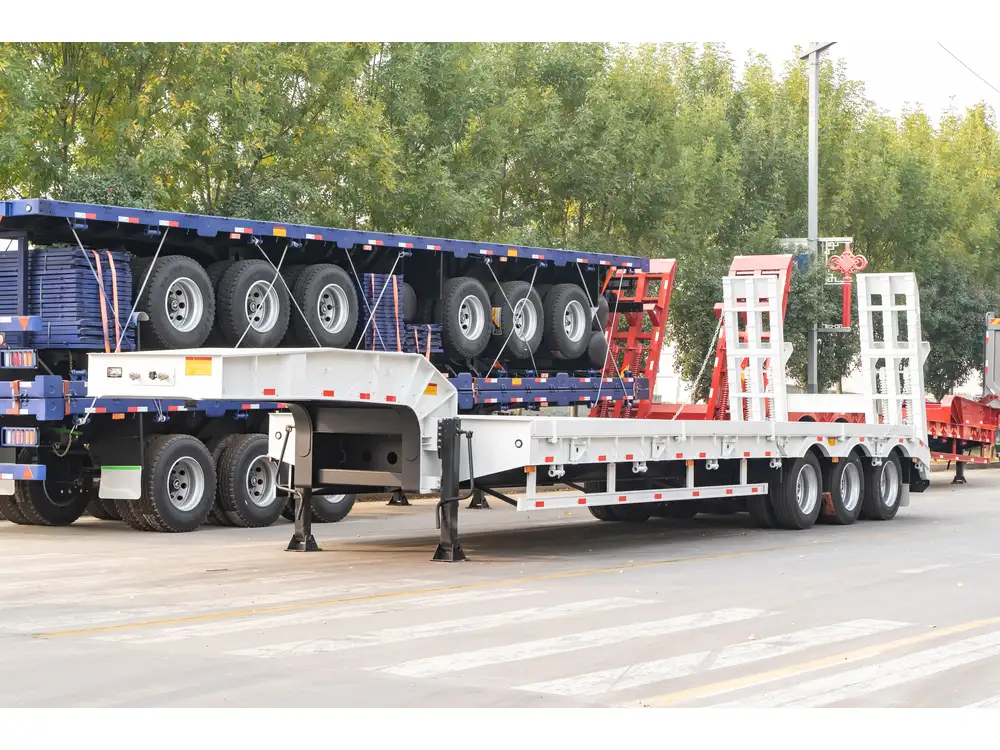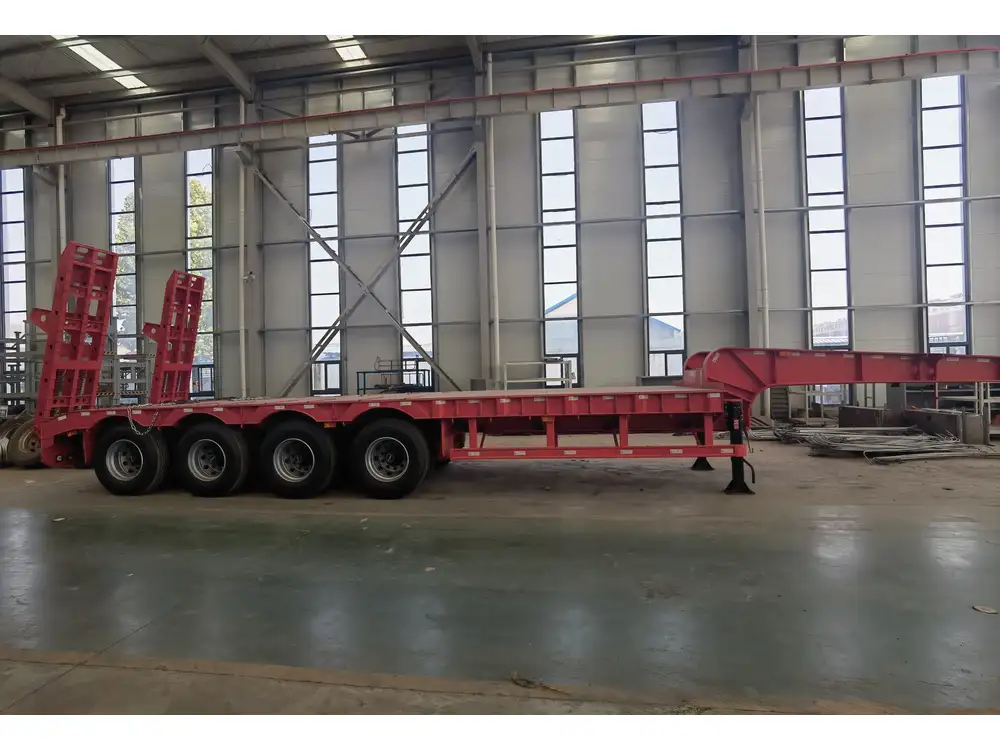When traversing the vast expanse of highways and interstates, ensuring that every component of your semi-trailer functions optimally is essential. Among the many systems onboard, the Anti-lock Braking System (ABS) plays a crucial role in maintaining safety and control. However, the illuminated ABS light on your dashboard can elicit concern, signaling that an underlying issue needs addressing. In this guide, we delve into how to fix the ABS light on your semi-trailer, providing detailed strategies, insights, and troubleshooting steps to restore full functionality.
Understanding the ABS System: The Backbone of Trailer Safety
Before diving into the repair process, it’s pivotal to understand the purpose and functionality of the ABS system in semi-trailers. ABS prevents wheel lockup during hard braking, thereby allowing the driver to maintain steering control. This technology is especially crucial for larger vehicles, which can be more challenging to control during emergency situations.
Common Reasons for ABS Light Activation
| Common Cause | Description |
|---|---|
| Faulty ABS Sensor | The ABS sensor monitors wheel speed; if it fails, the ABS light activates. |
| Wiring Issues | Damaged or corroded wiring can interrupt signals to and from the ABS module. |
| Low Brake Fluid | Insufficient brake fluid can trigger the ABS warning light, indicating the need for immediate attention. |
| Malfunctioning ABS Module | The control module can fail or become damaged, requiring replacement or repair. |
| Braking System Problems | Issues like worn-out brake pads or faulty brake lines can indirectly indicate ABS problems. |

Step-by-Step Guide to Troubleshooting the ABS Light
Step 1: Initial Inspection
Before proceeding to complex repairs, it’s prudent to conduct a thorough visual inspection.
- Check the Brake Fluid: Inspect the brake fluid reservoir. If low, this could trigger the ABS light. Top off with the recommended fluid type as specified in the owner’s manual.
- Examine Wiring and Connectors: Look for damaged or disconnected wiring around the ABS sensors and module. Ensure connections are secure and free from corrosion.
Step 2: Reading Diagnostic Trouble Codes (DTC)
Using an OBD-II scanner can provide deeper insights into the ABS light issue.
- Connect the Scanner: Plug the OBD-II scanner into the diagnostic port on the semi-trailer.
- Ignition On, Engine Off: Turn the ignition switch to the “On” position without starting the engine.
- Retrieve Codes: Follow the scanner’s prompts to read the trouble codes related to the ABS system.
| DTC Code | Description |
|---|---|
| C0035 | Left Front Wheel Speed Sensor Issue |
| C0040 | Right Front Wheel Speed Sensor Issue |
| C0045 | Left Rear Wheel Speed Sensor Issue |
| C0046 | Right Rear Wheel Speed Sensor Issue |

Step 3: Addressing the Identified Issues
Following the detection of trouble codes, the next step involves targeted repairs based on those codes.
Fixing Faulty ABS Sensors
Replacement:
- Disconnect the vehicle battery to prevent electrical shorts.
- Remove the faulty sensor by unscrewing it from the mounting location.
- Install a new sensor and ensure it’s correctly secured.
Cleaning:
- For dirty sensors, carefully clean the sensor with a lint-free cloth. Reinstall and check if the ABS light is extinguished.
Repairing Wiring Problems
- Inspection and Repair:
- Look for frayed wires or poor connections. Repair any damaged wiring using solder or electrical tape.
- Ensure all connectors are tight and clean. Replace any connectors that are excessively corroded.

Modifying or Replacing Brake Fluid
- Procedure:
- Locate the brake fluid reservoir, remove the cap, and pour in the appropriate brake fluid until it reaches the recommended level. If the fluid is contaminated or old, a complete fluid change may be necessary.
Step 4: Resetting the ABS Warning Light
After repairs, the ABS light may still be illuminated. Resetting it ensures that it no longer remains as a false alert.
- Reconnect the battery if it was disconnected during repairs.
- Use the OBD-II scanner to clear any trouble codes associated with the ABS system.
- Verify Functionality: Start the engine and check that the ABS light does not return after a moment of driving.
Step 5: Testing the Braking System
An ABS system repair is insufficient without a conclusive operational test.
- Pavement Test: Drive the semi-trailer on a flat, dry surface. Perform controlled braking to ensure the ABS activates correctly, preventing wheel lockup.
- Emergency Braking Test: In a safe and controlled environment, perform sudden stops from various speeds, confirming effective ABS deployment.

Preventative Measures: Ensuring Longevity of the ABS System
To avoid future issues with your ABS light, consider the following strategies:
Regular Maintenance Checks
Routine checks are critical. Establish a regular maintenance schedule that includes:
- Brake Inspection: Regularly evaluate brake pads, rotors, and fluids.
- Sensor Testing: Periodically test ABS sensors for functionality to catch issues early.
Environmental Considerations
Understanding how environmental conditions affect your semi-trailer is paramount:
- Winter Operations: Ice and snow can impact wheel speed sensors’ performance. Be vigilant about snow and ice accumulation around the tires and axles.

Investing in Quality Parts
When replacement parts are necessary, always opt for high-quality, manufacturer-approved components to ensure reliability and compatibility with your ABS system.
Conclusion: Keeping Your Semi Trailer Roadworthy
The indicators on a semi-trailer dashboard provide vital information about the vehicle’s health. The ABS warning light, while concerning, can often be traced to relatively simple issues that can be resolved with due diligence. By maintaining your ABS system, employing regular inspections, and addressing issues promptly, your semi-trailer will continue to perform optimally, ensuring safety on the roads.
Whether you are a fleet manager, owner-operator, or transport company, understanding how to fix your ABS light not only assures greater safety but also enhances the vehicle’s longevity. If difficulties persist or if you feel uncertain about conducting repairs, it’s advisable to consult a professional mechanic who specializes in heavy-duty vehicles. This proactive approach can save time and enhance the safety of your transport operations, giving you peace of mind as you navigate the highways.



